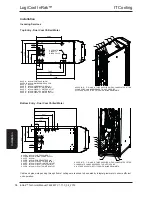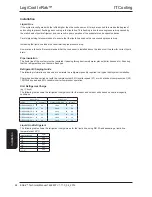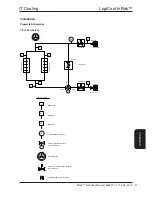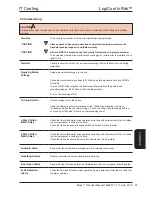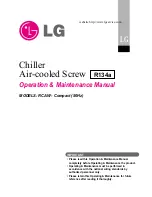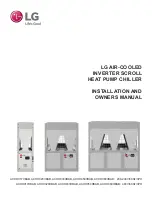
IT Cooling
LogiCool InRak™
63
InRak™ Technical Manual 7462807 V1.11.0_04_2016
Ins
ta
lla
tio
n
Installation
Refrigeration Pipework
Oil Traps
For long vertical rises in both liquid and discharge lines, it is essential that oil traps are located every 4m to ensure
proper oil movement/entrapment. In addition there should be an oil trap at the exit of the air handling unit before a
vertical riser is applied (refer to example below).
Pipe Supports
The following table identifies the maximum distance between pipe supports on vertical and horizontal pipe runs.
Pipe O/D (inches)
Support Centres (m)
3/8 - 7/8”
1.0
1 1/8 - 2 1/8”
2.0
Lines passing through walls
Refrigerant lines that rub against solid objects wear holes in the copper pipework and cause leaks, the lines must pass
through sleeved openings in such a manner that the lines do not touch.
Horizontal Sections
It is good practice to ensure a slight gradient toward the compressor in the direction of the refrigerant flow for suction
lines running horizontal. This assists oil return to the compressor. A gradient of approximately 1:200 (0.5%) shall be
used.
Discharge Risers
Consideration must be taken when designing vertical risers. Refrigerant velocity
must be ensured in vertical risers at a minimum of 8m/s.
If required double risers must be designed into the system. Pipework must be
sized based upon a reduction in unit capacity as low as 30% of design. The
double riser must be sized so that the refrigerant still maintains adequate velocity
for the oil to travel around the system.
At part load the velocity is reduced in the larger diameter pipe (and cannot
carry oil). An oil trap is formed forcing vapour up the smaller tube which still has
adequate velocity due to its size to continue carrying oil around the system. The
trap at the base of the riser must be as small as possible. This ensures that the
trap causes a pressure drop causing vapour to pass up the smaller tube.
When the load increases the velocity of the refrigerant ensures that oil carries up
both tubes.
CAUTION
All pipe work should be clamped prior to insulation being applied. Clamping over insulation is not acceptable.










